Thanks for connecting here at Nature Moments, where we explore the wonders unfolding in the world all around us all the time. I hope my photography + stories will inspire you to be curious, be amazed, and then do it again!
Your support helps me keep photographing and writing 💕
There’s this thing about getting to know your food…you just begin to connect with it in new ways. I mean, we’re all familiar with our fruits and vegetables in their final states, but if you can meet them where they grow, you suddenly realize that our foods have all of these daily-life-moments of their own. And their moments are often astonishingly beautiful!
A blueberry, in its final act, is very uniformly, characteristically, deeply, blue. But when it begins, it’s an iridescent, shimmering, crystalline, gracefully-nodding flower in shades of palest white and pink and green. (And incidentally, a honeybee can just fit its cute little head inside each blossom, while there is another teeny bee that can crawl inside completely!)
Tiny new berries emerge (perhaps unsurprisingly) pale green. But then they begin to develop this little fringe, called a calyx - which for some reason is hot pink. I suppose it’s to complement the young berries, which have gently shifted into icy shades of turquoise.
Spots of blush creep across the growing surface, deepening into mauve and dusty rose, then smoky lavender, before settling into their signature hue.
And any-given-stem, at any-given-moment, may display any-and-all-color-stages! So can you imagine what happens when the first rays of morning light encounter the lingering drops of morning dew on such a colorful tapestry?
Hundreds of camera clicks. That’s what happens. Because every time I look at it, the moment takes my breath away. It’s always the same, in a way, but it’s never quite the same. Every time I visit the ripening blueberries, I’m sure I’ve seen the most beautiful moment I will ever see - and I’m always happy to be proven wrong again my very next time out!
Did you know (I didn’t, until moving here to Maine) that there are two very different types of blueberry? They’re either highbush or lowbush, so named for their growth habits. Highbush blueberries form medium-sized shrubs and produce the plump berries most of us are familiar with at the grocery store. They’re by far the most common.
Lowbush blueberries, or wild blueberries, have a creeping habit and produce little pea-sized berries, which are highly concentrated in flavor and nutrients, and often considered more of a delicacy for being more rare. You may have encountered them if you’ve been on any sort of mountain trail, as they are common in this natural environment across most of the U.S.
Here in Maine, local growers are fiercely loyal to their wild blueberries (although highbush varieties are also native). Wild blueberries don’t grow well from seed, so cultivation is primarily an act of finding locations where wild blueberries are already established, and then clearing everything else away so that the wild blueberries can thrive. The rolling hilltops around our home are covered in wild blueberry barrens, prized and handed down through families across generations.
Wild blueberries, though, are also just wild and grow wherever they want! So we’ve happily found them growing in the various tangles of our own land as we’ve worked our way around. Whenever we find them, we simply clear back the weeds to give them space to grow and thrive and expand. We’ve also added highbush blueberries to our cultivated areas, because a blueberry of any type is an absolute delight on a hot summer day and all are welcome in our little slice of earth!
And do you know, when the berries have long been eaten, the blueberries are not yet done being amazing? As autumn arrives, their leaves turn red, and they stay that way as frost and snow settle all around their rosy glow.

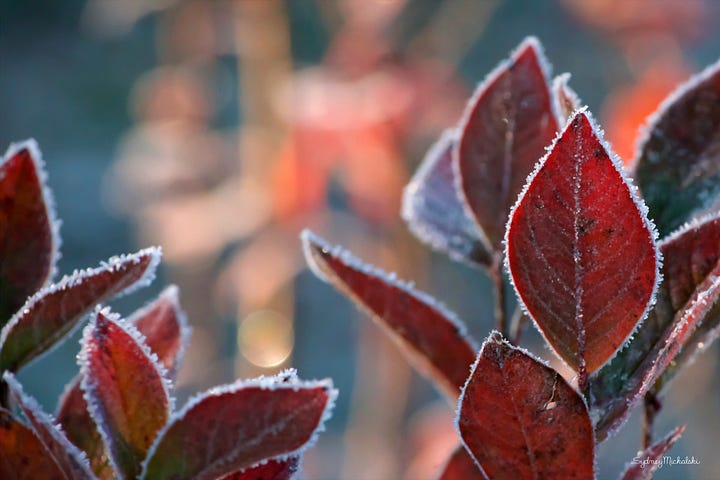
And if all that were not enough, I learned one more endearing quality of wild blueberries, just this past winter. Why, I wondered, were our wild blueberries only very-gently-red, while the surrounding barrens were aflame in brilliant scarlet?
It turns out, since our family hand-plucks for personal use, we barely disturb the leaves at all. Commercially, the harvest is vigorously raked with hand tools or machinery. The agitation and friction causes the leaves to turn a brighter red. And so, the wild blueberries respond to rough treatment with an even greater blaze of beauty - but knowing this, I still couldn’t bring myself to rough them up with this year’s harvest!🫐💕
shop custom prints: Wild Blueberries in Progress; Wild Blueberries; Warm Glow
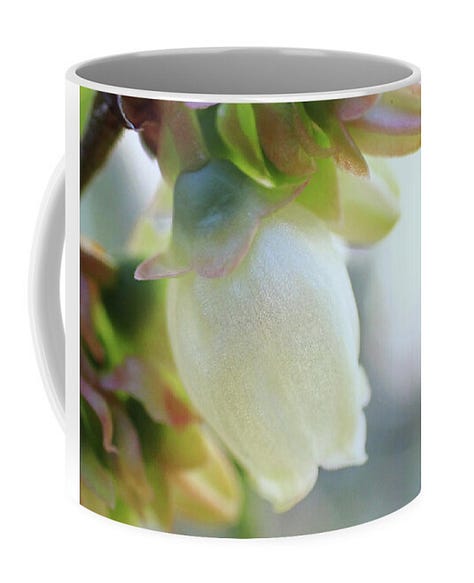


Visit my online gallery for custom-print wall art and decor, and bring some moments of connection home to your everyday life!





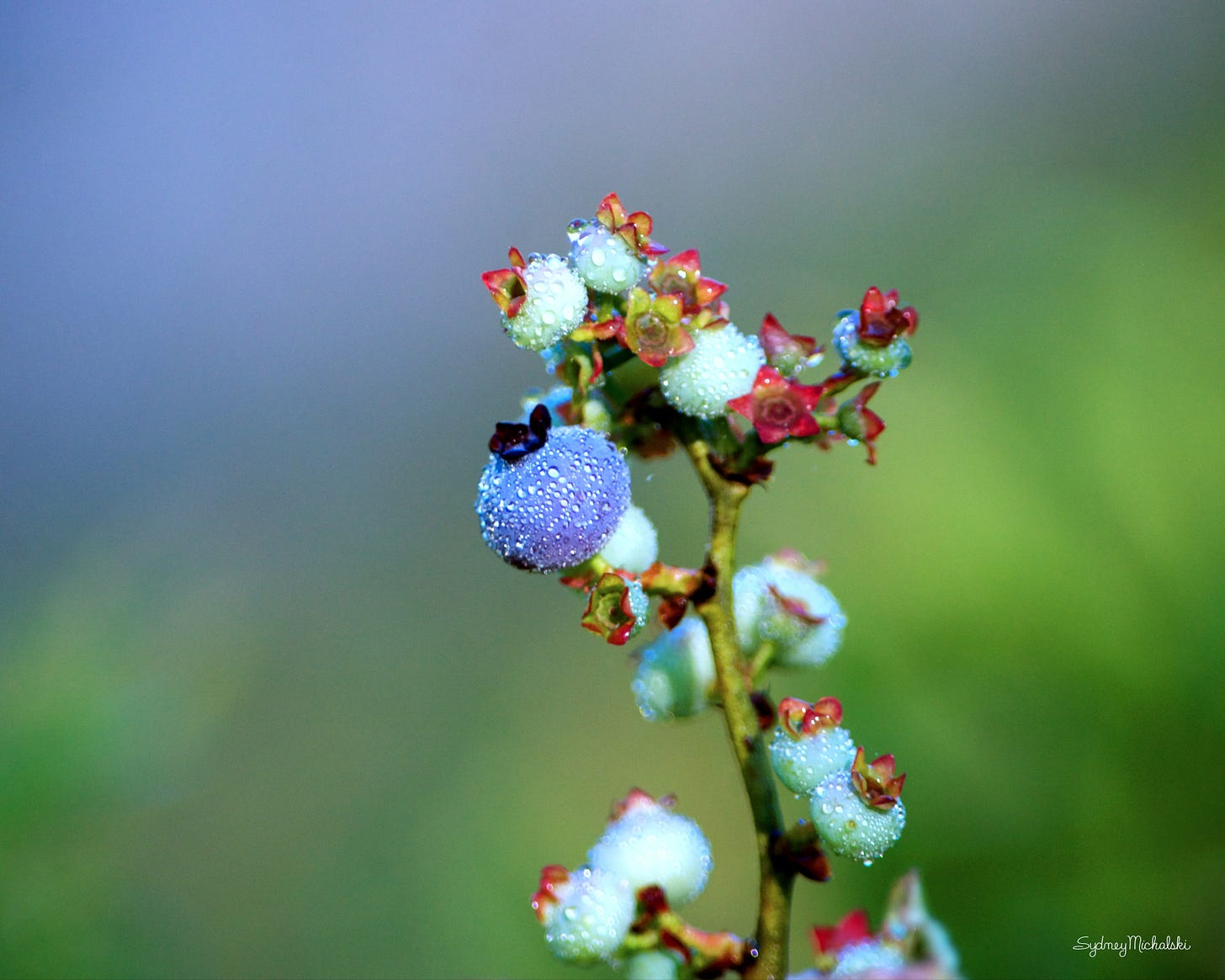

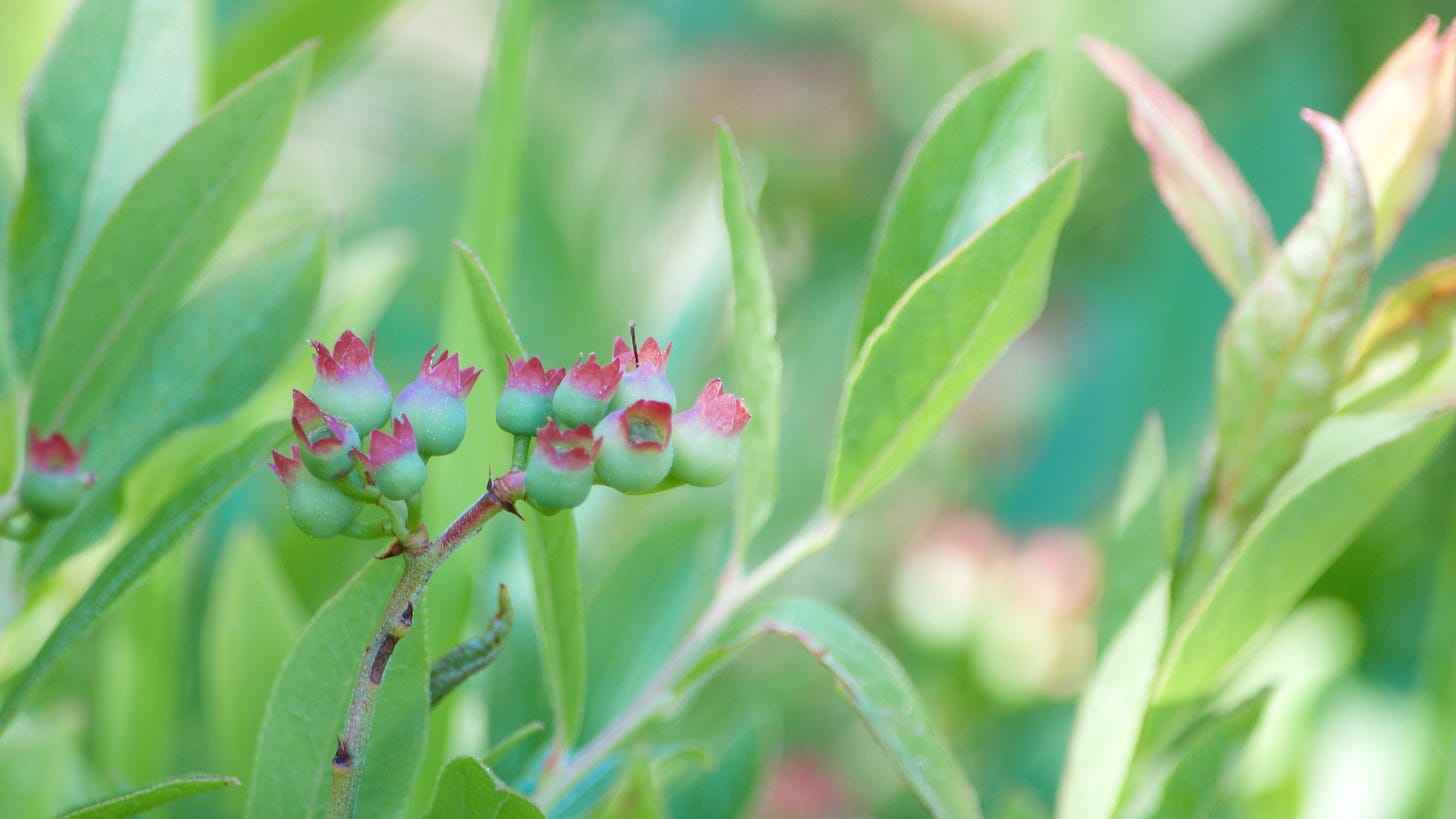

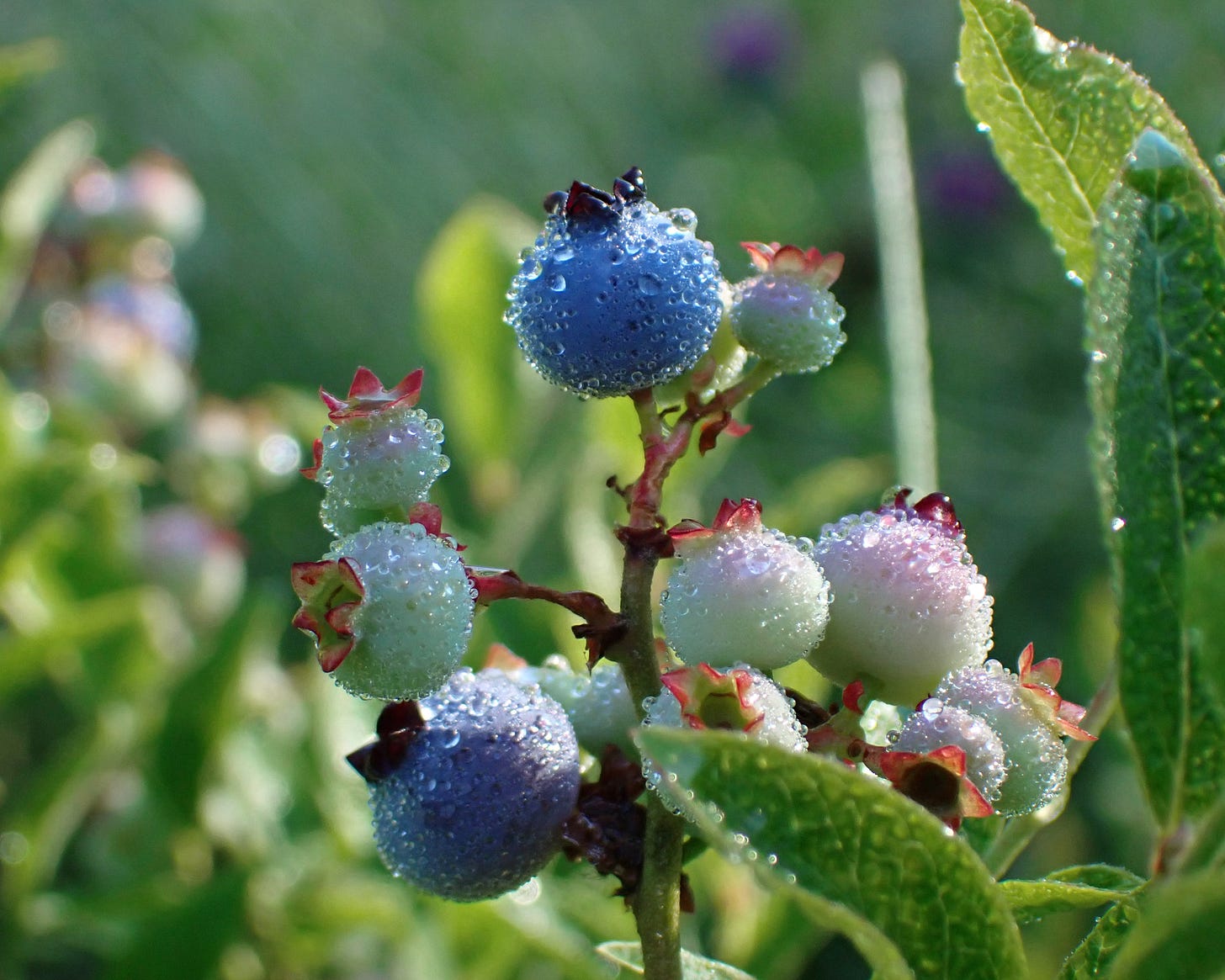
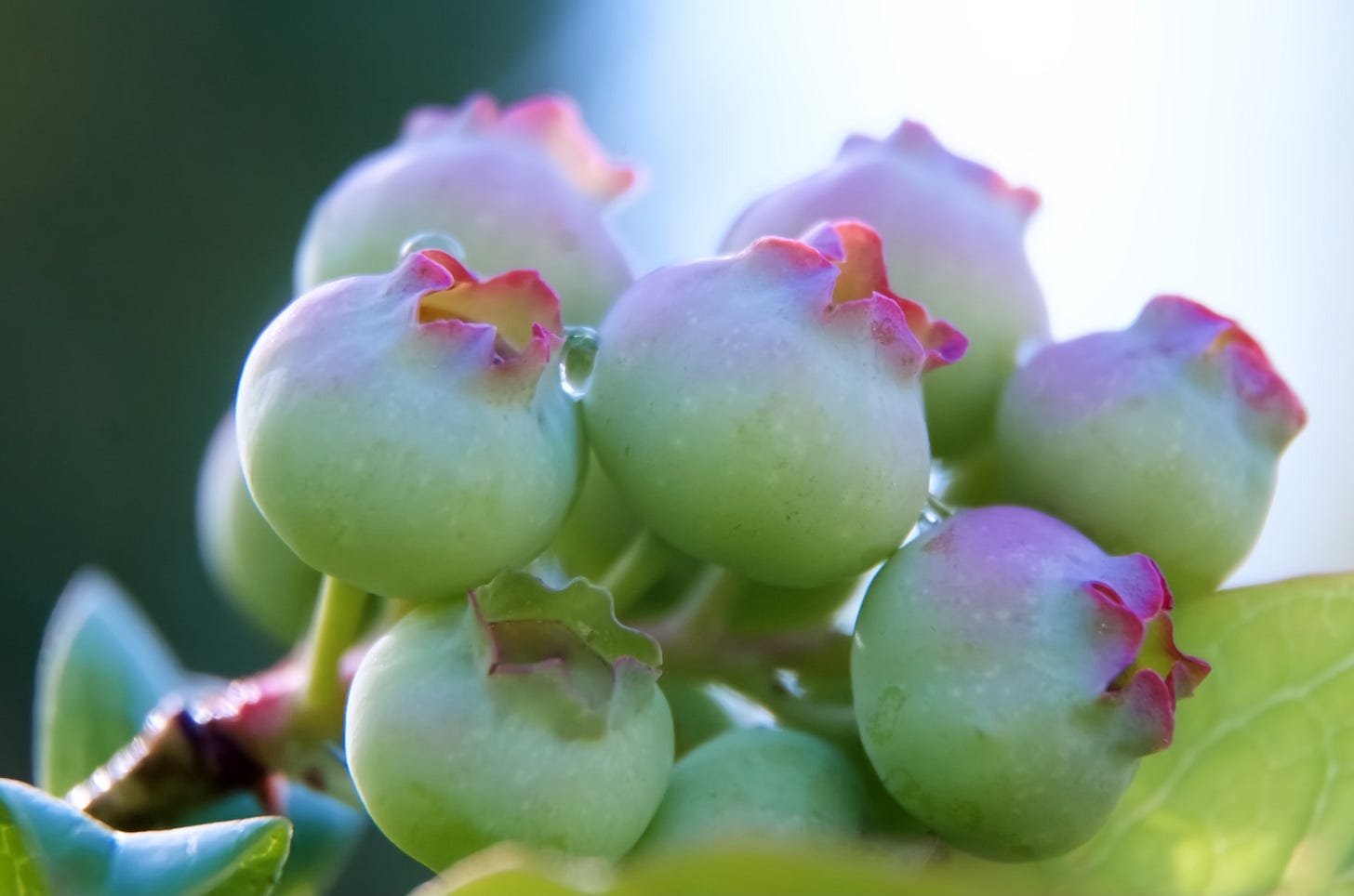
I love these blueberries in progress! I used to grow blueberries in my backyard garden, but when I had cancer, I couldn't keep the deer away and I let them wither. Next year might be time to try again. Thanks for always sharing so much beauty!
Excellent information and post Sydney. I did not know about the different growing habits of blueberry bushes. That image of the blueberries with water droplets on them is amazing and they look truly delicious!